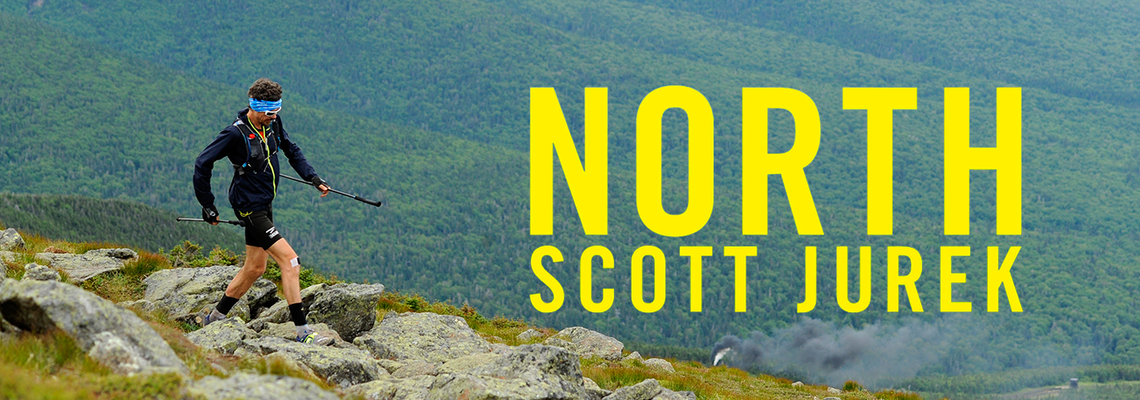North is the direction Scott Jurek went on the Appalachian Trail when he set his FKT in 2015, and the title of his new book describing that prodigious effort. Scott’s first book, “Eat and Run”, published in 2012, was on the NYT Bestseller list for a month and was nominated for a Best Food and Cookbook award; “NORTH - Finding My Way While Running the Appalachian Trail” won’t get that same nomination. This book is more literary, introspective, and provides an excellent behind-the-Twitter-feed look of what it’s really like to engage in a multi-day trail run.
Jenny Jurek is listed on the cover as co-author, and this device immediately opens interesting new doors: they trade chapters equally, as Scott describes what he’s doing and thinking, with Jenny coming right back with an often humorous and sometimes poignant behind-the-scenes personal report. Anyone who’s participated in a Supported multi-day effort knows the crew is a huge factor, so it’s a relief to finally get the real story behind the headlines, watching the two of them working it out as they go.
Which is how they conceived it from the beginning.
“I want to do the Appalachia Trail, go after the record. We can have lunches together and you can run sections with me. It will be a vacation, a fun adventure for both of us!” says Scott, very early in the narrative (p15).
Yeah right … a “fun" “vacation" (cue the chortling from experienced thru-hikers). But somewhere inside they both knew that “adventure” takes on many different faces, as one page later Scott muses, “I’m forty and I need to feel what it’s like to go to the edge again, and then go further."
Scott definitely got what he was looking for on the AT. The next 271 pages eventually build into a blow-blow account of a massive athletic feat, where he indeed comes face to face with his edge. But moreover we learn the inner drives of this particular champion, what it’s like to support a famous public person 24/7 for 46 days, how a married couple work through these massive stresses, plus likely the confirmation that you really don’t want to try for an FKT on the AT yourself.
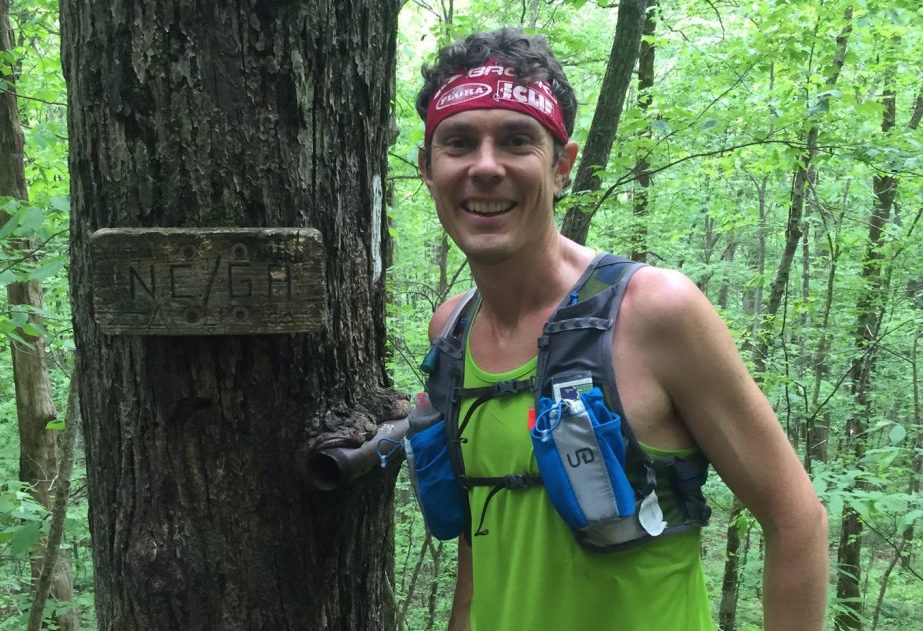
Before Karl Meltzer set off on his first AT attempt in 2011, I thought to give some advice, all of which fell on deaf ears, and all of which he learned himself and followed on his third and successful attempt in 2016. So when Scott and Jenny told me of their plans for the AT in late winter of 2015, I was tempted to offer helpful advise again, but realized there was no point in trying. Top ultra runners invariably think their particular skill set will translate into success on big multi-day trails. Heck, 20 minute miles will be easy, right? Experienced long-trail FKT holders know that research, planning, organization, and methodical execution are just as important as aerobic fitness, but this is somehow lost on accomplished racers, who quite frankly, are normally required to do relatively little planning and organization. At a race, you are told exactly where to go, at exactly one particular hour and minute of one day, are handed absolutely everything you need, and if the slightest thing goes wrong, there is a phalanx of volunteers and professionals to support, help, and even haul you out if needed.
An FKT is the opposite.
Scott and Jenny found this out. The reality of a long trail FKT hit hard. Then instead of quitting and coming back more prepared the following year, they soldiered on, learning and growing as they went. “One and done!” was Jenny’s war cry. This style makes for a really, really, hard trip. The upside is it also makes for a good book.
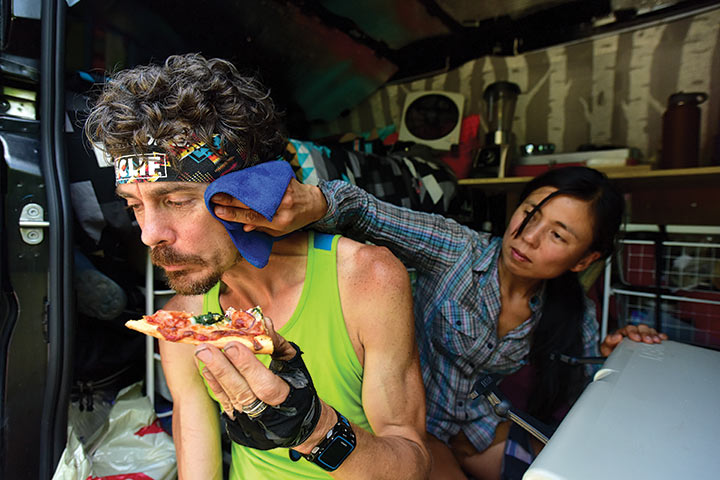
I’ve known and worked with Scott and Jenny for years, and I learned much more of their personal backgrounds in this book, which I found very enjoyable. And a who’s-who of ultra-running is constantly parading in and out of their journey, which if nothing else, greatly enhanced the narrative. Jenny’s quips regarding many of these all-stars may make you laugh out loud, even as some of Scott’s idiosyncrasies may make you either cheer or groan. But everything that made it harder on them makes it easier on the reader. As Garrison Keillor stated, “Nothing bad ever happens to a writer. It’s all good material.”
David Horton (“Let’s go to Maine, boy!”), Karl Meltzer (“You guys are taking too long. No chitchat!”), Luis Escobar, Timmy O’Neill, Mark Godale, Aron Ralston, and many others make up the all-star crew that rotated in with increasing frequency, and at the end, were crucial in getting the job done.
I was following their progress at that time, noting they were on the rivet for the FKT. The pressure builds, because while a hundred things may cause you to lose time from your schedule, almost nothing will enable you to make it back up. The photo’s and video we all saw of Scott on the social feeds were alarming; he was plainly weak and moving very slowly.
Then I read that Topher Gaylord and Krissy Moehl were flying out for the final week, which literally sent a shiver up my spine. “They’re bringing in the big guns now”, I remember thinking.
You can now read all about those final days. Maybe not quite all of it, but you’ll get the gist. To paraphrase Hillary Clinton, it takes a village to get a Jurker an FKT.
This is Scott’s style. He’s a famous person. And he’s famous not just because he’s possibly the best US male ultra runner in history, but because he loves his fans as much as they love him. When the Speedgoat encouraged him to quit yakking with the hundreds of fans who came out, spelling out the math as to how much time he was squandering, and Jenny seconded that with, “Just try not to waste too much time talking to people!”, Scott dismissed it with, “…if it comes down to hours, then you can get made at me." I’m not sure if he still hadn’t realized the AT record was very solid and what the proper techniques were in order to break it, or because interacting with people is just his style.
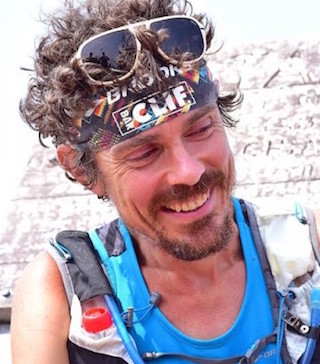
Style is important. We go after the number, but really, it’s how we feel while we’re achieving that number that gives it meaning.
Scott is a man of conviction. He asked to be tested to his limits, and when he got whacked upside the head and failure was imminent, he came back and found strength in that simplest of convictions: “This is who I am”. He could have saved bundles of time by not taking selfies with fans, but that is not who he is. He was confronted with all of it, and held fast to his convictions ... indeed, they are what got him through. “This is what I do.”
Just as there are lots of ways to do a thru-hike or an FKT, there is always no shortage of discussion and argument over which style is best, who’s best, what is best, etc. Scott was very honest on doing the AT Supported, mainly because he wanted to do it together with Jenny, while also admiring those who hike/run it in the Self-Supported style. The two of them made a ton of errors, struggled mightily, and yet absolutely achieved every single one of their goals - as Scott usually does - which includes writing a very good book.
Fortunately, there exists one maxim that settles all discussions about thru-hiking. There can be no further argument or dissent after this maxim is invoked. This is the one rule to rule them all: “Hike your own hike”.
Scott and Jenny definitely did that. Good for them!
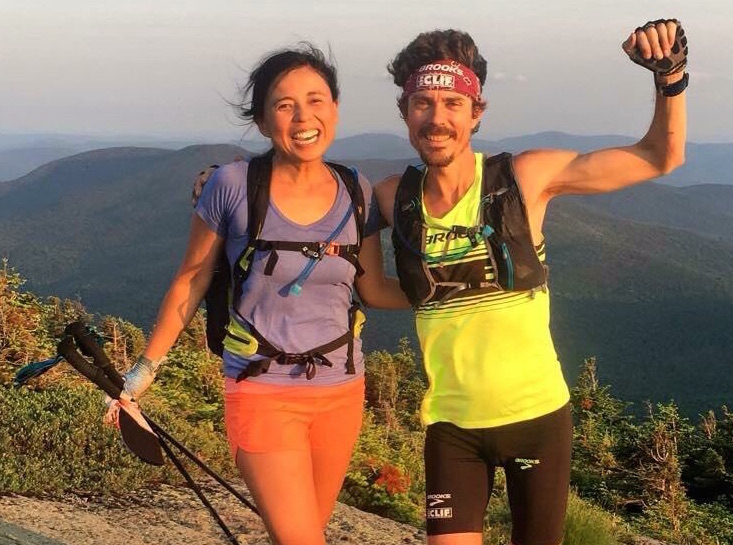
Personal Interview
Which is harder: running the Appalachian Trail or writing a book about it?
(Aron Ralston observed it took 46 days to do the AT, and 46 months to write about it :-)
Jenny: The book was way harder! Not even close! You can hardly imagine.
But then we re-wrote it three times. We really wanted it to be right. It was worth it.
Scott: No comparison! The book was much harder. We’re not writers. But we wanted to tell this story.
What do you want people to know that maybe they don't?
Jenny: It’s not like all I do is slave away for him. Normally it’s the other way around. In the book I say he's my ‘cabana boy’ - he’s great - around the house, in the kitchen, all the time. We just traded places for awhile.
What’s next?
Jenny: Nothing! Sitting on a beach. I don’t know; better ask Scott.
Scott: We have two kids now, which we’re really happy about; Evergreen was the ‘miracle baby’. And now this book tour. But we had something in mind … so maybe next year.
Appalachian Trail FKTs
2,189 miles. Overall FKTs, only, listed here. See the AT route on this site for female and male, self-supported and supported, and a complete discussion.
| David Horton | 1991 | supported | northbound | 52d9h42m |
| Pete Palmer | 1999 | supported | northbound | 48d20h11m |
| Andrew Thompson | 2005 | supported | southbound | 47d13h31m |
| Jennifer Pharr Davis | 2011 | supported | southbound | 46d11h20m |
| Scott Jurek | 2015 | supported | northbound | 46d8h7m |
| Karl Meltzer | 2016 | supported | southbound | 45d22h38m |
| Joe McConaughy | 2017 | self supported | northbound | 45d12h15m |

